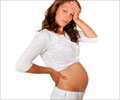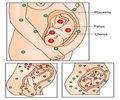Revealed was the study that risk of having SUI 12 years following first childbirth is greater if the symptoms appeared after first delivery or during first pregnancy.
Revealed at the Nordic Uro-Gynecological Association (NUGA) meeting was the study that risk of having SUI 12 years following first childbirth is greater if the symptoms appeared after first delivery or during first pregnancy.
According to Professor Gunnar Lose, Department of Obstetrics and Gynaecology, University of Copenhagen, “It is well known that pregnancy and childbirth can increase the risk of SUI symptoms. However, the long-term effects are less well established. During the preparation and immediately following childbirth, healthcare professionals and women develop a relationship whereby patients trust and are receptive to advice from their doctor. The doctor can encourage patients to be vigilant and seek professional help if they develop SUI symptoms in the months and years following childbirth.” He is also the co-author of the study.SUI is a grave problem for women and can also be called a stigma. Treatment is sought for it.
In order to diagnose SUI, patients can simply be asked whether they experience accidental leakage of urine during physical activities such as sneezing, coughing, laughing, lifting or exercising.
Although it is common not may people know that treatments exist.
The treatments include lifestyle interventions, pelvic floor muscle training, pharmacological treatment and surgery.
The results from this 241-women study conclude that an onset of SUI symptoms following first delivery puts women at the greatest risk of long-term SUI.
Advertisement
“It appears from this study that the risk of long-lasting SUI is related to the time of onset and the duration of SUI after first pregnancy and delivery,” Lose said. “Healthcare professionals, particularly gynaecologists, should be aware of the long-term risks of SUI and take the opportunity of pre- and post-natal visits to discuss the risks and treatment options, thus helping women to avoid suffering in silence at a later stage.”
Advertisement











